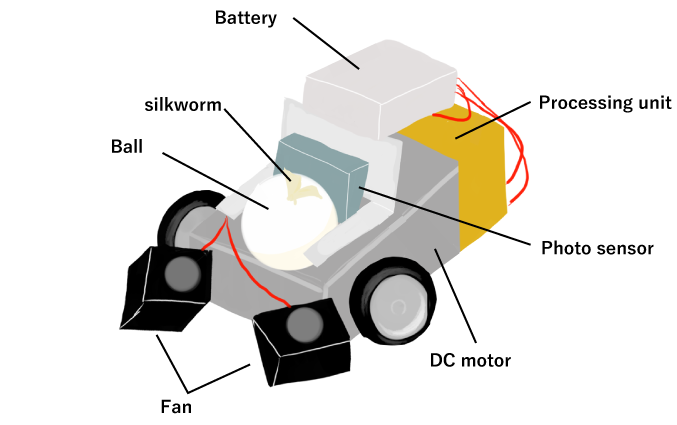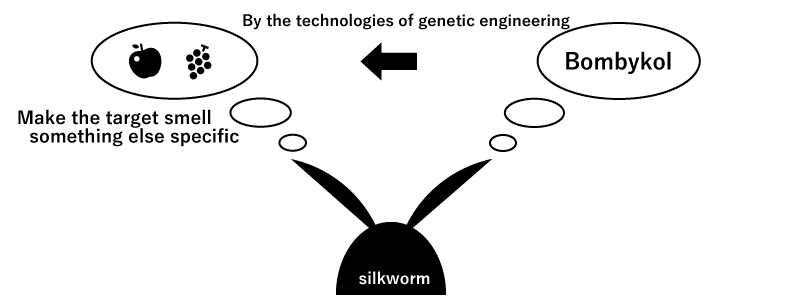


Insect-Controlled Robots
More than half of all organisms on earth are insects, and they live in a variety of environments around the globe. There are so many abilities that insects have acquired during the process of evolution: bees can recognize each other's faces, crickets can identify individuals, and so on. What kind of information in the environment these insects use and how they process, and how these abilities are born, is important, because they often use information in the environment that we don't know yet, and we can find new value in it. This is how we can use this information to create new products that are friendly to people and the environment.
Silkworm Moth Insect-Controlled Robot
Structure
Female silkworm moths produce pheromones in the pheromone glands located at the end of their hips. When the pheromone (bombykol) released from the gland reaches the antennae of the male on the wind, it is detected by an odor sensor in the antennae. The sensor that responds to bombykol has a protein called bombykol receptor that can bind only to bombykol. When bombykol binds to the receptor, Ca ions flow into the sensor through the receptor, and the sensor emits a signal. The signal flows to the brain, where it is processed in various ways, and is finally transmitted to a special place called the premotor center. The neural network in this place creates the instructions that cause the silkworm moth to search for the pheromone, which is then transmitted to the body, causing the legs and wings to move appropriately.

The "insect-controlled robot" is a device that places a male silkworm moth on top of an air-floating ball and allows the moth to control the mobile robot. Using this kind of robot, we tested how much the insects were capable of.
When the silkworm moth on the robot detects the pheromone and starts to move, the ball moves back and forth, left and right, as if it were riding a ball, and the infrared sensor measures the rotation and uses the signal to move the robot. The robot then moves in the same way as the silkworm moth does. The silkworm moth then controls the robot and successfully reaches the pheromone source.

Applications
Detecting specific odors and locating their source is very important. For example, it makes it possible to rescue victims buried alive in disaster areas or detect explosives, drugs, etc. However, currently, there are no engineered sensors that can detect such specific odors with high sensitivity. In this situation, the olfactory ability of insects has attracted attention, and research on reproducing insect odor sensors and brain mechanisms is rapidly developing.
Silkworm moths have an odor sensor on their antennae that detects a pheromone (bombykol), and when this sensor detects bombykol, the moths will search for the odor source. If we can change this sensor to respond to specific odors other than bombykol, we will be able to create silkworm moths that search for specific odors as pheromones. Such technology has been made possible by genetic engineering. Silkworm moths that have been modified in this way are called "Police Insects".

In the future, police insects will be used to detect illegal drugs at international airports, and if we can genetically modify silkworm moths to react to illegal drugs, we may be able to identify people who come to the airport with hidden drugs.
Genetic engineering technology can also be used to introduce olfactory receptors into cells that respond to specific odors, creating odor sensors that light up when they detect a particular odor. These are called a Sensor Cells". This technology could be used in a variety of fields.
This site is participating in the 23nd Japan Junior high school/high school Web contest(第23回全国中学高校Webコンテスト).
